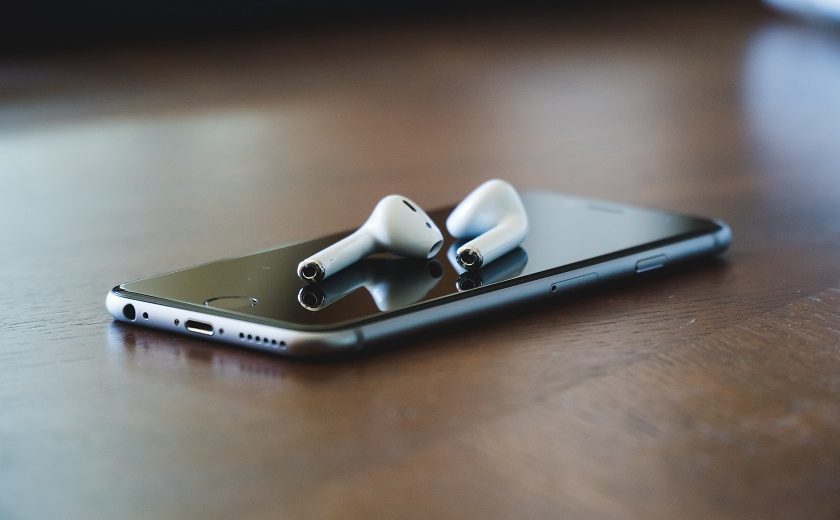It’s estimated that about one out of every five teenagers today has some form of hearing loss – a staggering increase of about 30 percent compared to the 1990s. The World Health Organization (WHO) suggests that 1.1 billion people between the ages of 12 to 35 years old are at risk of developing hearing loss.
- What are the factors or habits that are affecting the hearing of young adults?
Teenage hearing loss in on the rise, with recent studies indicating 1 in 5 teenagers demonstrating at least a slight hearing loss. This increase since the early 1990s is due to the frequent use of earphones bundled to smartphones and portable music players. Teenagers are also more likely to engage in risky hearing activities, such as loud video games, mp3 players cranked to full volume, concerts, nightclubs, sporting events, movie theaters, and surround-sound entertainment systems that deliver an unprecedented assault on the hearing organ. Even more worrying is that these teenagers are aware of the risks, yet choose not to protect their hearing. Apart from noise-induced hearing loss, the other causes of hearing loss include:
- Congenital hearing loss: A non-preventable condition that you are born with.
- Head-injury: A fractured skull or a blow to the ears can cause hearing loss.
- Infection/Illness: Illnesses such as chickenpox, mumps, measles, or persistent ear infections can have a detrimental effect on hearing. Brain tumor.
- Medication: Certain types of antibiotics or a course of chemotherapy can damage the inner ear.
- Are there any possibilities of reversing or curing hearing loss?
The hearing organ, which is shaped like a snail, is also called the cochlear. We are born with about 15,000 hair cells inside the cochlear. (This number is extremely low when compared to the millions of photoreceptors in the retina of the eye or the smell receptors in the nose!) Sound vibrations cause these hair cells to sway, resulting in the activation of electrical signals that are sent to the brain through the hearing nerve. The brain then tells you that you are hearing a sound and what the sound is. Unlike skin or other cell types in our body, damaged hair cells do not regenerate or restore. A loud sound can permanently bend or physically shear a fragile hair cell, causing perpetual loss of function. Scientists are yet to discover a product that can reverse or cure hearing loss by hair cell regeneration.
- How to identify if I or the people around me are suffering from deteriorating hearing?
Parents may find it hard to identify whether their teen is having difficulty hearing based solely on their behavior, as the signs often match the ‘typical’ teenage stereotypes. There are certain behaviors that should flag your concern if a pattern forms:
- Turning up the volume of the TV or stereo excessively loud while insisting that it sounds ‘fine’ to them.
- Speaking with a raised voice during a normal conversation or mumbling softly, making it difficult to catch what’s being said.
- Frequently saying they didn’t hear you.
- An unexplained decline in academic performance at school, which can lead to feelings of isolation and low self-esteem.
- Lack of participation in the classroom and a reluctance to get involved in group activities.
- Seemingly ignoring you when you talk to them in a normal tone of voice.
- Spending less time with their friends and generally not wanting to go out like they used to.
- A persistent high pitch ringing, humming, or buzzing sound which could be an indication of tinnitus.
- A feeling of fullness in the ears is an indicator that something isn’t quite right.
- How can young adults protect themselves from hearing loss?
We only have one set of ears and it is important that we protect our children from an increasingly noisy world. Educating our children from an early age about the risks of unsafe listening practices can save them from significant and permanent hearing loss later in life. These are a few simple measures to modify their listening behavior:
- Low to mediocre quality earphones is unable to transit the bass effectively, leading to the temptation to turn the music volume up. Therefore, young adults should buy high-quality earphones that can effectively transmit the bass, or even better use headphones instead.
- Headphones limit the volume to 85 decibels, which is the limit that the World Health Organization (WHO) considers “safer”.
- Follow the 60/60 rule: No more than 60 minutes of listening at a time, and no higher than 60 percent of maximum volume.
- Teenagers should warn one another if they are putting their hearing at risk. If you can hear your neighbor’s music over the headphones or earphones, it is too loud.
- Take breaks from listening to music, and try not to fall asleep while listening to music through earphones.
- If teenagers are experiencing symptoms like ringing, humming, or buzzing in their ears, they should immediately turn down the volume and see a hearing care professional (ENT doctor or audiologist).
- Ear protection should be used consistently in loud environments like concerts, sporting events, and nightclubs.
- Single-sided deafness (SSD) has been recognized as a disability in Malaysia, do explain more about SSD?
In 2019, the Social Welfare Department of Malaysia has included single-sided deafness (SSD) or profound unilateral hearing loss on its disability list. So what is SSD? Hearing loss in one ear is known are a unilateral hearing loss. The degree of hearing loss can vary from mild, moderate, severe to profound hearing loss. In general, “single-sided deafness” refers to profound hearing loss in one ear, with normal hearing in the other ear. We were designed to have two ears for a reason – the brain uses both ears to pinpoint the location of a sound and to improve hearing quality and range. Losing hearing in one ear presents particular challenges like:
- You cannot always pinpoint where the sound incoming from.
- You may struggle to hear in noisy environments.
- You may find it harder to tell how loud a sound is.
- You may struggle to multi-task.
- Victims of hearing loss do go through physical and emotional challenges. As concerned family and friends, how can we help them?
When you talk with a hearing-impaired person, the following tips might be helpful:
- Face the person and stand close to them when speaking.
- Gain the person’s attention before speaking, so that they are ready to look at you and focus on what you are saying.
- Make sure they can see your mouth clearly
- Try not to speak while chewing or smoking, do not cover your mouth – this is to aid lip-reading.
- Speak more clearly and slowly but at a natural pace.
- Raise your voice if you have to, but try not to shout.
- Speak expressively and use face, hand, and body movements.
- If needed, use a pen and paper.
- Where and how can young adults that are suffering from hearing loss get help/aid?
Most young adults put off getting diagnosed and treated for hearing loss. The first step towards helping young adults with hearing loss is to get them to do a hearing test by an audiologist. When hearing loss is diagnosed, it can be very overwhelming. The next step is for them to learn more about the condition and to talk to a Ear, Nose and Throat (ENT) doctor with any questions or concerns that they may have. Family support groups is another way to connect with others who have had similar experiences to get help with how to cope day-to-day, find solutions and ways to obtain services. Depending on the severity and cause of hearing loss, it can be treated with some of the following options:
- Technology to help with communication: for example hearing aids, cochlear implants and bone conduction hearing devices.
- Medicine and/or surgery to correct some types of hearing loss.
- Assistive learning devices: for example FM system, audio loop system, amplifiers, infrared listening devices.
- Family support groups.
 Article by:
Article by:
Dr. Jeyanthi Kulasegarah
FRCS, MD, MRCS, DOHNS, LRCPSI, MB, BCh, BAO (NUI)
Consultant Otorhinolaryngology, Head & Neck Surgery Interest in Otology and Paediatric Otorhinolaryngology
University Malaya Specialist Centre


